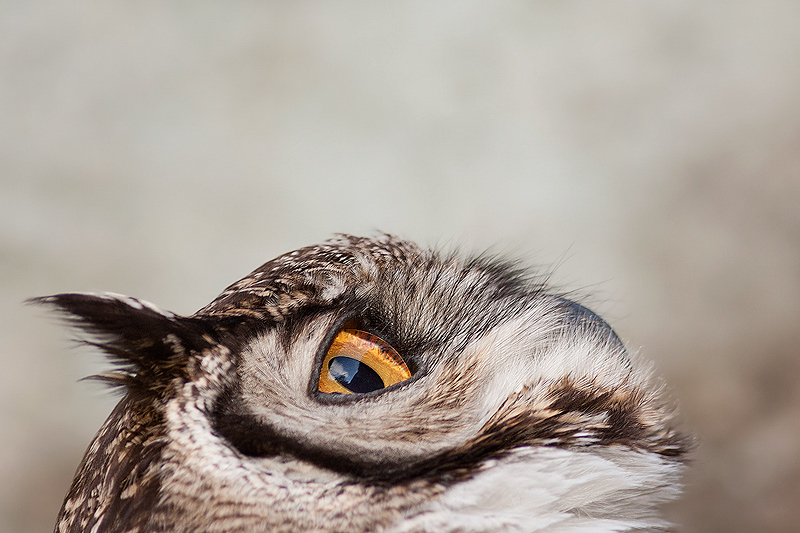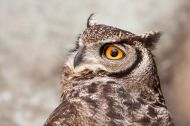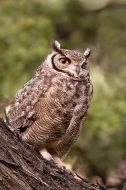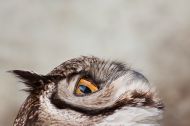Magellanic Owl
Tucuquere
Bubo magellanicus
Length: 500mm. Sexes alike. Bill black; iris yellow; facial disc buffy ochraceous or rufous ochraceous framed within a black auricular circle; large hornlike tufts; throat white; upper parts of head, hind neck, upperparts, wings and rectrices ochraceous buff and grey with blackish brown markings. Breast, flanks, abdomen and undertail coverts buffy cream with greyish appearance, blackish spotting and fine crosswise undulating barring on breast; remainder with fine and abundant undulating blackish barring; feathered tarsi and toes buffy cream or ochraceous. The male is smaller than the female and population of the latter is considerably larger; based on the authors’ observations and specimens collected there is a male every five or more females. The Great Horned Owl or Ñacurutú, as known locally, is a very common species and is easily identified by its large size, large “ear tufts”, cryptic coloration and big eyes with a yellow iris. Habitat and behaviour: it is found solitary or in pairs, in the most diverse environments and in all types of terrain. Individuals show, depending on their habitat, remarkable differences in plumage. During the day this species remains concealed and still. When it becomes active, at dusk, it communicates with its pairs by uttering a characteristic hoot; if it is upset or threatened, it extends its wings pretending to be larger in size than it actually is and clatters its bill with a strong tapping sound followed by huffing and puffing. It feeds on all types of small mammals such as rats, mice and voles. It also catches medium size prey like young hare, skunk, birds and reptiles, rounding up its diet with various insects. The nest is located on tree branches, in caves, cavities and ledges of banks and rocky walls, or directly on the ground. It takes advantage of abandoned nests of other birds; it lays two to three white eggs. Range: the Great Horned Owl occurs throughout South America except for the Amazon basin. The populations that are found in Argentina belong to two different races: Bubo virginianus ñacurutu, that inhabits Buenos Aires, La Pampa, San Luis and in the north of the country, except in the Andes, and Bubo virginianus magellanicus, that inhabits the Andean region to Mendoza, and Patagonia from Neuquén and Río Negro to Tierra del Fuego. North America supports other races of this same species.
Illustrated Handbook of the Birds of Patagonia
Kindless: Kovacs Family
|












